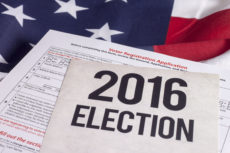Samuel R. Staley • Tuesday, June 21, 2016 •

Available on pre-order from Southern Yellow Pine Publishing.
On June 20, 2016, a jury convicted Vanderbilt University football player Brandon Vandenburg of rape after just 4 1/2 hours. He was found guilty on eight counts, meaning he could get 15-20 years in prison. Many are comparing the Vanderbilt case to the Stanford University rape case, where former collegiate swimmer Brock Turner was convicted of sexual assault with attempt to rape. But this is a mistake. The two cases are very different, and the implications for campus sexual assault policy are significant.
I’ve spent the last three years researching and writing a book on campus sexual assault, Unsafe on Any Campus? College Sexual Assault and What We Can Do About It, and it’s slated for official release on July 28th. This problem is enormously complex, and two important observations (among many others) became very apparent : 1) not all rapists are the same, and 2) the criminal justice system is poorly suited to address campus sexual assault.
The Vanderbilt and Stanford cases have several similarities: They occurred at what many would call elite universities,* they involved athletes, alcohol played a crucial role, and the victims were unconscious (or near unconscious) when they were attacked. One other factor puts these cases in a league of their own: the defendants were convicted of the underlying crime of sexual assault and rape. This happens in fewer than 10% of cases brought to prosecutors, a startling statistic I unpack in my book.
Lawrence J. McQuillan • Tuesday, June 21, 2016 •
 As part of a year-long national campaign promoting my book California Dreaming: Lessons on How to Resolve America’s Public Pension Crisis, I’ve been saying that it’s impossible to have both public governance of defined-benefit public pension plans and responsible management of these plans. Politicians face strong perverse incentives to mismanage the plans for their own benefit. Recently, California Gov. Jerry Brown proved me right, once again.
As part of a year-long national campaign promoting my book California Dreaming: Lessons on How to Resolve America’s Public Pension Crisis, I’ve been saying that it’s impossible to have both public governance of defined-benefit public pension plans and responsible management of these plans. Politicians face strong perverse incentives to mismanage the plans for their own benefit. Recently, California Gov. Jerry Brown proved me right, once again.
Twice since April 2016, the Brown administration has negotiated new labor contracts—one with the California Correctional Peace Officers Association and another with the California Statewide Law Enforcement Association—that undermine sound management of the pension plans and undercut the PEPRA public pension reforms.
According to Jon Ortiz of the Sacramento Bee, as part of these new contracts, covered employees no longer need to pass a physical-fitness test to receive a $65 monthly fitness incentive payment. The $65 will now be included in base pay, and the total $780 per year becomes pensionable income and subject to future pay raises. But Ortiz noted: “Under Brown’s 2013 pension [reform] law, fitness pay doesn’t count toward retirement benefits,” and with these new labor agreements, “Voila! Loophole created.”
This illustrates how government pension debt has ballooned to about $950 billion in California and $5 trillion nationally. When the public isn’t looking, politicians make deals with government unions to ratchet up pension benefits—sometimes in small ways and sometimes in large—in exchange for votes and campaign contributions. Politicians, including Gov. Brown, talk the pension-reform talk when the public and the media are focused on the issue, but as soon as they turn away, politicians make deals that undo the reforms they supported earlier.
Randall G. Holcombe • Tuesday, June 21, 2016 •
 Yes, he’s a long shot, but Gary Johnson, Libertarian candidate for president, has the best chance to make it to the White House of any Libertarian candidate so far. To have a chance, he only has to pick up enough electoral votes to keep Clinton or Trump from getting an electoral majority.
Yes, he’s a long shot, but Gary Johnson, Libertarian candidate for president, has the best chance to make it to the White House of any Libertarian candidate so far. To have a chance, he only has to pick up enough electoral votes to keep Clinton or Trump from getting an electoral majority.
The Constitution says that if no candidate receives a majority of the electoral votes, the House of Representatives chooses the president from among the top three electoral vote recipients. If the election between Clinton and Trump is close, Johnson would only have to win a few states (maybe only one) to be one of the top three electoral vote recipients. The Constitution gives no preference to any of the three candidates when nobody wins an electoral majority. When no candidate had a majority in the 1824 election, the House chose John Quincy Adams for president even though Andrew Jackson had more electoral votes.
If Johnson picked up enough electoral votes to keep Clinton and Trump from winning outright, the majority Republican House of Representatives would then choose either Clinton, Johnson, or Trump to be the next president. It is easy to see that a Republican House would not choose Clinton, but it is also likely they would favor Johnson over Trump. Johnson is a former Republican governor, but as the Libertarian candidate, choosing Johnson would also be a way for them to claim they are being non-partisan by not choosing the Republican or the Democrat.
For this to happen, Johnson will have to win some electoral votes, which means that rather than running a truly national campaign, the Libertarian party should target a few states that are most likely to swing their way. I have to think that the Libertarian party and the Johnson campaign have already figured this out. Sure, it’s a long shot, but because of the way the electoral college system works, it is well within the realm of possibility.
Gary Johnson could be our next president.
Kevin Dowd • Monday, June 20, 2016 •
 [Based on remarks to the Hewitts-Northern Echo Brexit debate held in Darlington, County Durham, England, 15 June 2016.]
[Based on remarks to the Hewitts-Northern Echo Brexit debate held in Darlington, County Durham, England, 15 June 2016.]
If we British vote to stay in the European Union (EU), we should consider exactly what it is that we would be voting to remain in.
The EU is a democratically-deficient failed state.
Its ‘constitution’ is a sham inconsistent with our own.
Its five presidents are contemptuous of the peoples they misgovern.
It is governed by a corrupt and unaccountable kleptocracy.
It fleeces us for many billions a year, most of which it wastes on pork-barrel projects.
Vicki E. Murray-Alger • Monday, June 20, 2016 •
 New York City Mayor Bill de Blasio claims that compulsory preschool is “the way of the future.”
New York City Mayor Bill de Blasio claims that compulsory preschool is “the way of the future.”
Along with Nancy Pelosi, President Obama, and presidential candidate Hillary Clinton, de Blasio claims universal, public preschool will improve high school graduation rates, as well as college and job preparation.
The ineffectiveness of the largest and longest-running federal preschool program Head Start is well documented, including the fact that any positive effects begin fading out as early as first grade and were largely dissipated by third grade – hardly the basis for the long-term future benefits politicians keep promising.
Other programs hailed by preschool proponents such as the High/Scope Perry Preschool Project, the Carolina Abecedarian Project, and the Chicago Child-Parent Center Program each have serious limitations that make them inappropriate models for large-scale programs.
John R. Graham • Monday, June 20, 2016 •
 There is a global shortage of many human organs for transplantation. Yet, it is illegal to sell your organ for transplantation in the United States.
There is a global shortage of many human organs for transplantation. Yet, it is illegal to sell your organ for transplantation in the United States.
Or is it?
Just a few days ago, President Obama announced a series of actions to encourage more organ donation. The president noted that while 95 percent of Americans state they favor organ donation, only half of us have registered as donors. The administration will use various tools to “nudge” more of us to register. He will also invest a few hundred million dollars in more research on organ transplantation.
How about just increasing the supply of organs through a free market? The idea of allowing people to sell their organs for personal gain grosses many of us out. Although, it is legal to sell our plasma, and many poor Americans find it profitable to do so. The moral case for a market in organs has been made by Independent Institute Senior Fellow Abigail Hall.
A major insurer may have found a side door into this market, by offering up to $5,000 to kidney donors to cover their travel expenses. Clever, eh? Of course, UnitedHealth Care would never accept the description of this offer as opening a market for organs. UnitedHealth Care states the simple fact that, expensive as transplantation is, it is even more expensive to have patients undergoing dialysis treatment without end.
William F. Shughart II • Monday, June 20, 2016 •

In May 2012, Scotland’s parliament enacted a law setting a minimum unit price (MUP) for all alcoholic beverages sold nationwide. The MUP of 50 pence (about 72 cents) per 10 milliliters of pure alcohol applies to beer, wine and distilled spirits, but has not yet gone into effect because the legislation, not surprisingly, was challenged in court immediately by the Scotch Whisky Association and other industry trade groups.
Edinburgh’s Court of Session is expected to rule later this summer on the industry’s lawsuit. The decision will be watched closely not only in Scotland, but in England, where a similar proposal was shelved in 2012; in Canada’s Saskatchewan province, where MUP (with five price bands depending on alcohol content) already is in place; and in other nations, such as Estonia and Ireland, which are considering minimum prices for alcoholic beverages.
Proponents of establishing a floor price see it as a way of mitigating the social costs of alcohol abuse (e.g., drunk driving, wife beating, child neglect, absenteeism and publicly financing the treatment of alcohol-related diseases) by raising sharply the prices of the cheapest adult beverages on the Scottish market. Opponents have countered that MUP will “artificially distort trade in the alcoholic drinks market, contrary to EU law.”
Abigail R. Hall • Saturday, June 18, 2016 •
It seems like every time I get online I see posts about college students advocating for the restriction of free speech on college campuses. From “safe spaces” to Emory students calling to evaluate teachers on their use of “microaggressions,” sometimes I feel like I’m living in the Twilight Zone. It certainly wasn’t that long ago since I was in college. My college was a place for people to explore new ideas, encounter people from a variety of backgrounds and, believe it or not, get acquainted with ideas that may make many people uncomfortable.
I’ve seen many people question these “social trends” in higher education. In particular, they’ve delved into how these movements threaten the very ideals of American society, namely, freedom of speech.
As anyone who knows me can attest, I am an ardent defender of liberty. You will find no one more dedicated to the preservation of individual freedom than myself. However, there is another problem with these trends I’d like to discuss. That is, what are the implications for this generation of college students? To answer this, I think we need to go to the genesis of the problem—parents.
On the first day of class I give my students their syllabus. I tell them several things. One thing I tell them is, “I’m not talking to your mom.” In fact, under federal law, I’m not allowed to do so unless a student waives his or her right to privacy. Even if they do, I can speak to a parent, but I don’t have to. I tell them that, as adults, if they have an issue with the class, that’s something for the two of us to discuss. If a parent has a problem with his child’s performance, that’s something he needs to discuss with his child.
Robert Higgs • Wednesday, June 15, 2016 •
 As part of my lunch today, I enjoyed a big, ripe, sweet, firm peach. “So what?” you may be asking. Well, my doing so is more remarkable than one might think. You see, I live at the extreme end of the road, near a remote, isolated village in the farthest southeast corner of the Mexican state of Quintana Roo; and the peach I ate was grown in California.
As part of my lunch today, I enjoyed a big, ripe, sweet, firm peach. “So what?” you may be asking. Well, my doing so is more remarkable than one might think. You see, I live at the extreme end of the road, near a remote, isolated village in the farthest southeast corner of the Mexican state of Quintana Roo; and the peach I ate was grown in California.
I acquired this fruit, as I acquire the bulk of the fruits, vegetables, and other fresh comestibles I consume, from Lucio, a man who rises each day at 4:00 a.m. and heads to the market in Bacalar, a town about 100 miles from my home. Lucio loads his pickup with fresh produce and other things, hauls these products for two hours, and offers them to those of us who live along a pot-holed road in this far-away place. The people who sell to him, in turn, acquire their inventory from other sellers, who are part of a perhaps lengthy supply chain whose specifics I do not know. I know only that each entrepreneur who participates in this amazing process makes considerable investments and bears substantial risk in the hope of pleasing those who might buy from him. No sales are assured; buyers are free at every point to take it or leave it, and leaving it entails leaving the would-be seller holding the bag in more ways than one.
John R. Graham • Wednesday, June 15, 2016 •

The Equal Employment Opportunity Commission (EEOC) has finalized rules on how employers can use wellness programs. By current federal standards, the rules are concise: 19 pages pertaining to the Americans with Disabilities Act and 17 pages pertaining to the Genetic Information Nondiscrimination Act. Both laws are extremely popular. The ADA (1990) passed by 91-6 in the U.S. Senate and 377-28 in the U.S. House of Representatives. The GINA (2008) passed by 95-0 in the Senate and 414-1 in the House.
These laws are meant to prevent discrimination. However, this purpose bumps against the real world, where health insurers cannot charge different premiums to individuals who are sick. The Affordable Care Act (2010) allows employers to offer incentives to workers who participate in wellness programs, and can offer financial incentives up to 30 percent of premium (or up to 50 percent for anti-smoking programs). However, participation in a wellness program also necessitates surrendering personal health information to an employer who would otherwise be barred from having it (under the Health Insurance Portability and Accountability Act, 1996).
Because employers cannot use underwriting for medical risk to charge different premiums to different employees, it is hard to avoid the conclusion that wellness programs are designed less to make or keep employees well than to ensure healthy people are attracted to the employer and sick people are not. Evidence suggests this is the real consequence of workplace wellness programs.
ACA-related rules attempting to triangulate these contradictions were published in 2013 (the “tri-department rule”). However, the Obama administration recognized that these two previous laws also had to be reconciled with the ACA. So, more regulations had to be emitted. Professor Timothy Jost summarizes the rules at Health Affairs blog:
Unlike the tri-department rule, which applies only to wellness programs connected with employer-sponsored health insurance or health plan coverage, the EEOC ADA and GINA rules apply to employer wellness programs whether a wellness program is part of employer-sponsored health plan, is offered to employees whether or not they participate in a health plan, or is offered by employers that do not sponsor a health plan or health insurance.
There is no hiding place. We have come a long way from ensuring people in wheelchairs can enter buildings. Laws intended to prevent discrimination are now being used to regulate corporate yoga classes.

 As part of a year-long national campaign promoting my book
As part of a year-long national campaign promoting my book  Yes, he’s a long shot, but Gary Johnson, Libertarian candidate for president, has the best chance to make it to the White House of any Libertarian candidate so far. To have a chance, he only has to pick up enough electoral votes to keep Clinton or Trump from getting an electoral majority.
Yes, he’s a long shot, but Gary Johnson, Libertarian candidate for president, has the best chance to make it to the White House of any Libertarian candidate so far. To have a chance, he only has to pick up enough electoral votes to keep Clinton or Trump from getting an electoral majority. [Based on remarks to the Hewitts-Northern Echo Brexit debate held in Darlington, County Durham, England, 15 June 2016.]
[Based on remarks to the Hewitts-Northern Echo Brexit debate held in Darlington, County Durham, England, 15 June 2016.] New York City Mayor Bill de Blasio
New York City Mayor Bill de Blasio There is a global shortage of many human organs for transplantation. Yet, it is illegal to sell your organ for transplantation in the United States.
There is a global shortage of many human organs for transplantation. Yet, it is illegal to sell your organ for transplantation in the United States.
 As part of my lunch today, I enjoyed a big, ripe, sweet, firm peach. “So what?” you may be asking. Well, my doing so is more remarkable than one might think. You see, I live at the extreme end of the road, near a remote, isolated village in the farthest southeast corner of the Mexican state of Quintana Roo; and the peach I ate was grown in California.
As part of my lunch today, I enjoyed a big, ripe, sweet, firm peach. “So what?” you may be asking. Well, my doing so is more remarkable than one might think. You see, I live at the extreme end of the road, near a remote, isolated village in the farthest southeast corner of the Mexican state of Quintana Roo; and the peach I ate was grown in California.





